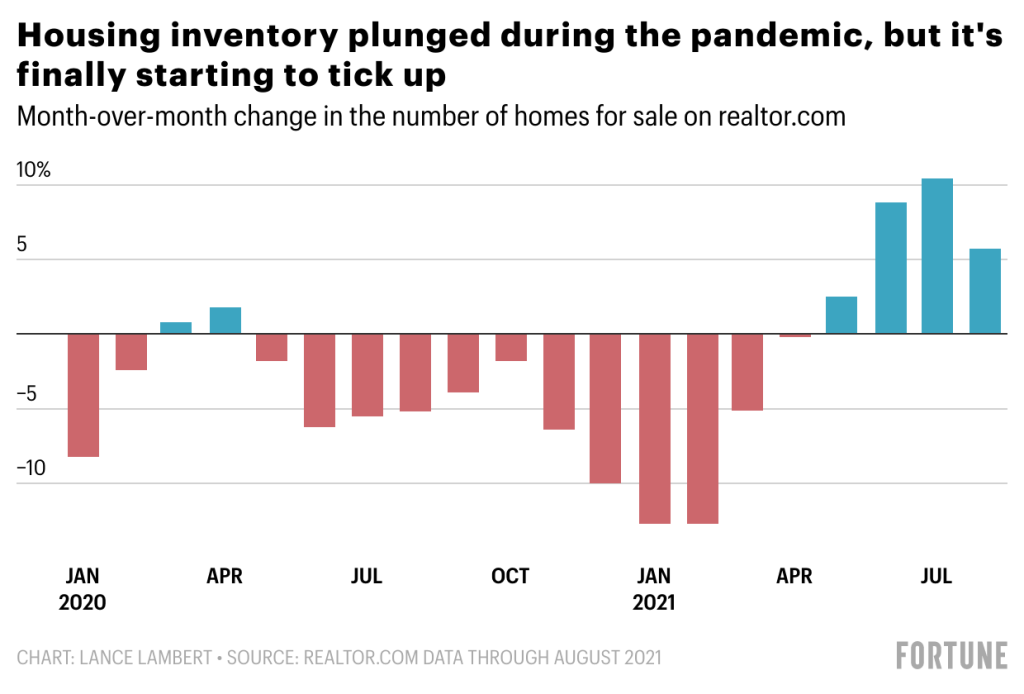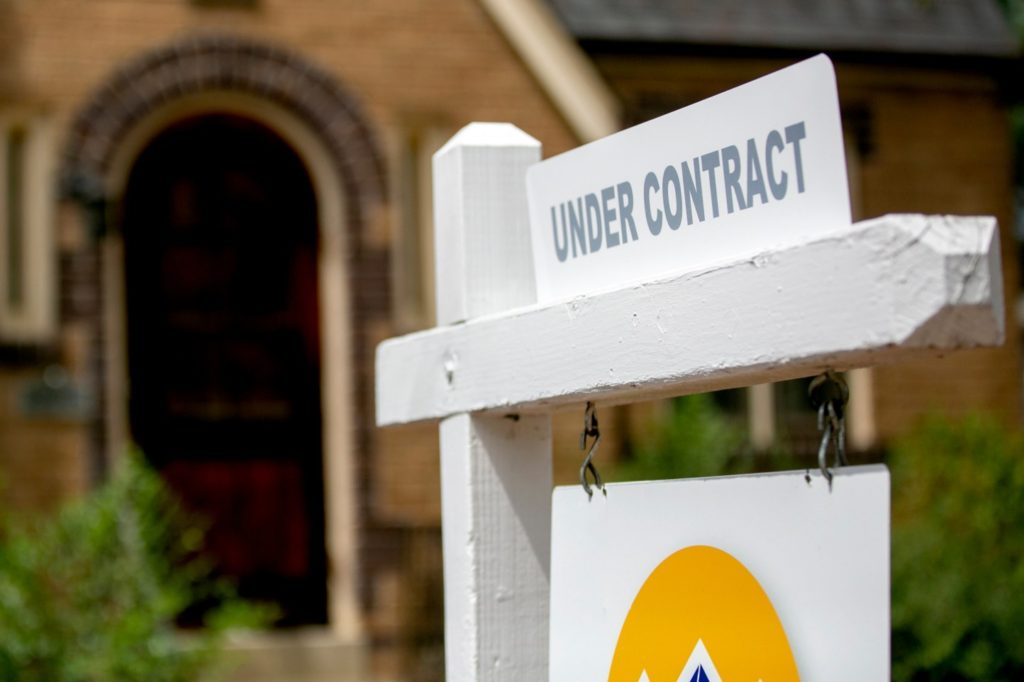Homebuyers just got more good news
BY LANCE LAMBERT
9/08/2021
The U.S. housing market—which has been on an absolute tear this year—is losing some of its exuberance.
New data from realtor.com shows that the number of homes available for sale inched up 5.7% in August. That follows 8.8% and 10.4% inventory gains, respectively, in June and July. Since bottoming out this spring, inventory is up 30%.
Rising inventory, of course, gives home shoppers a little more breathing room. And boy, do they desperately need it: For much of the pandemic, homebuyers have been pitted against one another in the tightest housing market in recent memory. The lack of inventory, which hit at least a 40-year low this year, has spurred bidding wars across the nation.
So why is inventory rising now? Well, a lot is going on. Some of it is simply homebuyers pushing back at the unprecedented home price growth; with prices up 23% since the onset of the pandemic, some shoppers are opting to hold their fire. Some of it is seasonality returning to the market; in the summer and fall, would-be buyers get distracted by vacations and the restart of school. (Seasonality was notably absent last year when this boom started.)

Tel: 551-580-4856 | Email: F.WINNIE.S@GMAIL.COM
There’s also the seller side: The prospect of cashing in on record home prices is quite enticing.
“There’s a mentality among some sellers that if they don’t sell now, they’ll miss their opportunity to get top dollar,” Ali Wolf, chief economist at Zonda, a housing market research firm, tells Fortune.

But don’t mistake this for a housing crash. Simply put: Demand from buyers still far outmatches supply.
The pandemic saw a perfect storm dry up inventory. More buyers, incentivized by recession-induced low mortgage rates and the work-from-home boom, plunged into the market. Meanwhile, many would-be sellers opted to stay put rather than move during a pandemic. Those factors are still in play and keeping inventory well below pre-COVID levels. Indeed, the 640,700 homes for sale in August on realtor.com is 38% lower than in March 2020.
“There’s been a recent uptick in inventory, but overall supply is still deeply depressed compared to pre-pandemic levels,” Wolf says. “Some existing homeowners, especially those that refinanced, are choosing to hold their home either as their primary residence or as a rental given their reasonable monthly mortgage payment.”

What’s coming next? The mortgage forbearance program, which currently protects 1.7 million homeowners, is set to lapse on Sept. 30. Some of those struggling borrowers will opt to sell rather than restart their monthly payment. That’s expected to translate into another uptick in inventory.
But even with all this cooling, home prices are still expected to rise. CoreLogic, a real estate research firm, forecast a modest 3.2% nationwide appreciation in the coming 12 months. The National Association of Realtors is just a tiny bit more bullish, forecasting a 4.4% uptick.
It Took Homes 11 Days To Sell In Denver In August. That Might Be A Sign That The Market Is Slowing
By Sarah Mulholland
9/04/2021

Home sales in the Denver metro are slowing, giving some buyers a chance to jump into what has been a highly competitive market for more than a year.
In August, houses sat on the market for an average of 11 days, according to a new report from the Denver Metro Association of Realtors. That may not sound like a lot, but it’s an increase from nine days in July.
And, earlier this year, homes were routinely going into contract within three to four days of being put on the market in the metro area, which includes Boulder and Broomfield counties.
Buyers typically move slower in late summer as families settle in for a new school year, Andrew Abrams, chair of the real estate association’s trend committee and a realtor in the area, noted in the report.
“They are a bit more patient, wanting to find the right house for the ‘right’ price,” Abrams wrote.
How long it takes to sell a home depends on its price, with less expensive homes selling faster than more expensive ones. A home with a price tag that is less than $500,000, for example, might be on the market for nine days, while a home priced in the $750,000 to $1 million range might sell in 16 days.
In August, the median price for a home in Denver was $540,000, which was about the same as July. But that’s 17 percent higher than it was a year ago.
It’s too early to tell whether the recent slowdown is due to seasonal patterns or the housing market beginning to correct itself after a boom that drove double-digit price gains across much of the state and the country.

“Sellers have basked in the control seat for so long that it can be hard to set reasonable expectations,” realtor Amanda Snitker wrote in the report, advising homeowners to prepare for a slower sales process.
While sellers might not be getting multiple bids in one weekend, low interest rates and a lack of homes for sale are still fueling a tight housing market.
A record-low 3,582 homes were listed last month in metro Denver, marking a 35 percent decline from the same time in 2020, according to the report. Typically, there are about 16,000 homes for sale in August, though that number topped 31,000 homes in 2006 — a record high.
So far this year, Denver home sales have totaled more than $25.5 billion, a 25 percent jump compared to this time last year, and about five percent above sales volume in August 2019. The pandemic shifted the normal ebbs and flows of the housing market, halting sales in the spring and early summer of 2020, and pushing them into the colder months.



